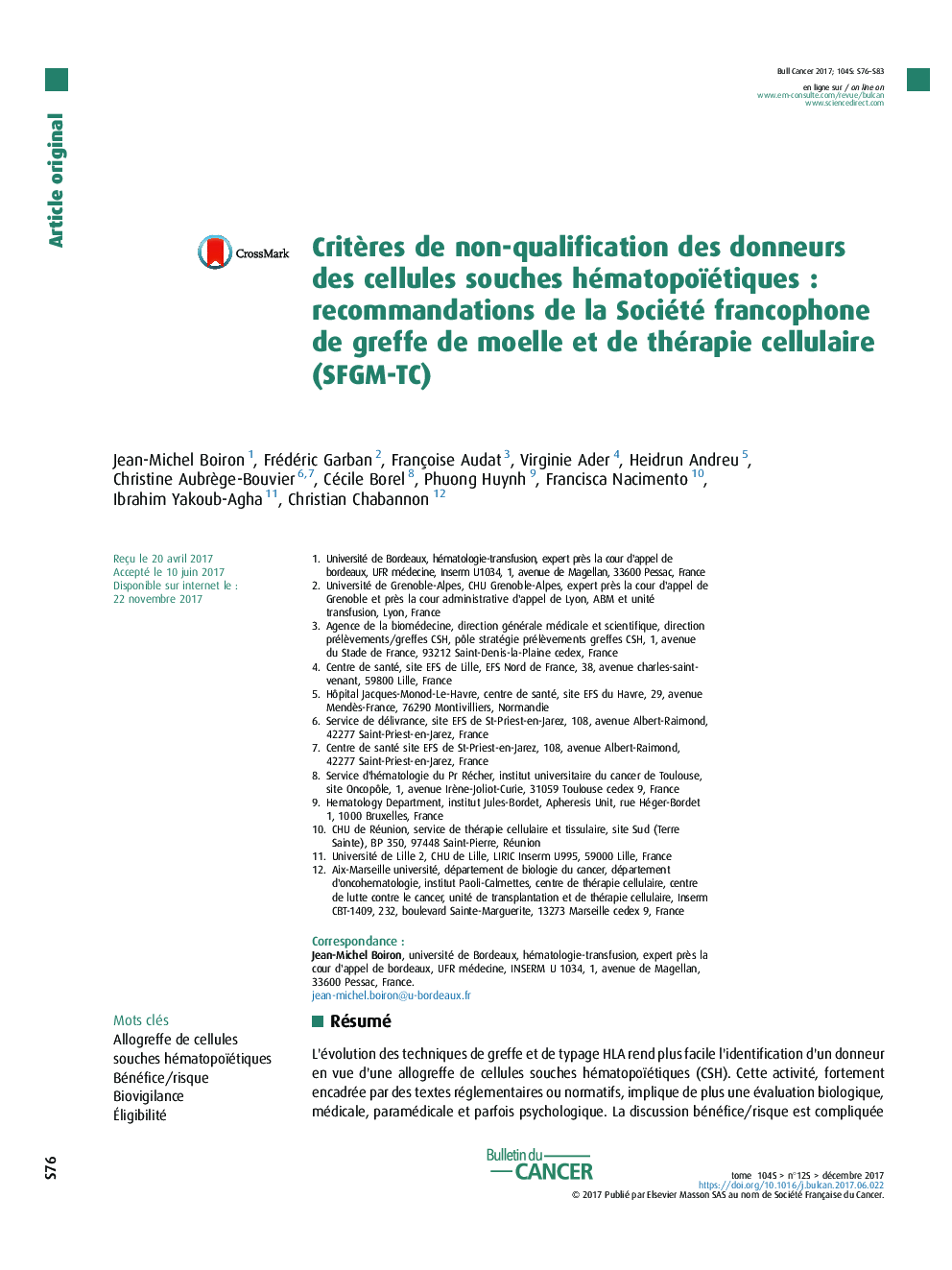| Article ID | Journal | Published Year | Pages | File Type |
|---|---|---|---|---|
| 8785671 | Bulletin du Cancer | 2017 | 8 Pages |
Abstract
The evolution of HLA typing and transplantation techniques makes it easier to identify a donor for hematopoietic stem cell (HSC) transplantation. This activity, strongly regulated by regulatory or normative texts, implies in addition biological, medical, para-medical and sometimes psychological evaluations. The benefit/risk discussion is complicated because it must take into account the benefit/risk ratio for the recipient, and the donor risk. No Evidence-Based Medicine data is available and serious events are very rare situations. Biovigilance declarations and their analysis are of fundamental importance. Certain obvious and definite contraindications could be detected very early in the process. It is important to assess whether a risk factor or pathology contributes to increasing the risk associated with collection. In case of recipient risk, the situation should be discussed with the patient team. These recommendations focus on adult peripheral blood HSC donors. They refer to donor information, confidentiality of exchanges, the impact of moral or material pressures, declarations of biovigilance, collegiality and traceability of difficult decisions, desirable experience and training for doctors in charge, use of expert advice informed by an explicit exchange on the possible risks, parsimony of therapeutic interventions and minimization of risks for the donor. We also recommend creation, availability and use by the community of tools and documents (registries, questionnaires, synthetic recommendations, feedback, and collegial qualification meetings) useful for practice.
Keywords
Related Topics
Health Sciences
Medicine and Dentistry
Oncology
Authors
Jean-Michel Boiron, Frédéric Garban, Françoise Audat, Virginie Ader, Heidrun Andreu, Christine Aubrège-Bouvier, Cécile Borel, Phuong Huynh, Francisca Nacimento, Ibrahim Yakoub-Agha, Christian Chabannon,
